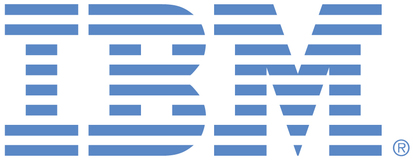
This portal is to open public enhancement requests against products and services offered by the IBM Data Platform organization. To view all of your ideas submitted to IBM, create and manage groups of Ideas, or create an idea explicitly set to be either visible by all (public) or visible only to you and IBM (private), use the IBM Unified Ideas Portal (https://ideas.ibm.com).
Shape the future of IBM!
We invite you to shape the future of IBM, including product roadmaps, by submitting ideas that matter to you the most. Here's how it works:
Search existing ideas
Start by searching and reviewing ideas and requests to enhance a product or service. Take a look at ideas others have posted, and add a comment, vote, or subscribe to updates on them if they matter to you. If you can't find what you are looking for,
Post your ideas
Post ideas and requests to enhance a product or service. Take a look at ideas others have posted and upvote them if they matter to you,
Post an idea
Upvote ideas that matter most to you
Get feedback from the IBM team to refine your idea
Specific links you will want to bookmark for future use
Welcome to the IBM Ideas Portal (https://www.ibm.com/ideas) - Use this site to find out additional information and details about the IBM Ideas process and statuses.
IBM Unified Ideas Portal (https://ideas.ibm.com) - Use this site to view all of your ideas, create new ideas for any IBM product, or search for ideas across all of IBM.
ideasibm@us.ibm.com - Use this email to suggest enhancements to the Ideas process or request help from IBM for submitting your Ideas.
IBM Employees should enter Ideas at https://ideas.ibm.com
Hi Shreya,
Thanks for reviewing my idea.
Regarding link renaming: My standard practice is to use temporary short names (e.g., 'x') for faster, more readable expression development (x. + autocomplete), renaming them descriptively later.
Generally, ETL tools originated as productivity enhancers, but now often feel slower and more clumsy [or cumbersome/less streamlined] than SQL/Spark development, particularly with GenAI-enabled IDEs offering rapid assistance. Core developer efficiency needs to be a primary focus again.
I'd also love if you would consider how to leverage the power of concise textual editing – the effectiveness of osh code comes to mind – perhaps by making it a directly editable component alongside the visual design.
It would be a real winner if you cleverly combine text and visuals: e.g., you could display the constraint expressions on the outgoing links from the transformer stage, or display the join key(s) and join type underneath the join stage icon. This would enable a developer to grasp critical parts of the job logic without actually opening the stages.
Regards,
Timm
Hi Timm - Thank you for the feedback on the new Transformer stage. Below we have responded to a few of your comments with information on work we are conducting for the stage (we are investigating the timestamp display options outside of Transformer), as well as some info to help you as you work:
Items we intend to implement (roadmap):
Shift + click for column range selection
Column width adjustments and improved controls
Enhanced constraint field functionality (preventing cutoff expressions using a smaller window)
General comments:
Input link renaming - Feature not included in this location to avoid redundancy
Multiple column selection - You can click individual columns and select them until you have selected all columns you want, then drag them to the location you want to move them to
Shift + click is a roadmap feature to be implemented (see above)
Constraint fields - Calculator button available for dedicated constraint editing
Metadata display - NULL properties editable in Edit columns tearsheet for consistency
Reordering columns
Check the box on a column you want to move and click one of the four arrow options that appear in the top right corner: move to top, move up one, move to bottom, or move down one. Note: In this context, ‘top’ means the leftmost in the table and ‘bottom’ means the rightmost in the table.
Overflow options (three dots) - These follow CP4D conventions that are found elsewhere when there are three or more actions (e.g., delete, edit, and advanced changes)
Furthermore in lists and tables, cell padding is too wide. That wastes room. Less information is visible and makes users to scroll a lot.
Another screenshot of a bad UI piece... Properties of stages. Why do we need 3 tabs when only one is displayed. I suggest: you could have the stage properties on the right, the input/output column list in a separate box on the bottom of the screen. Or maybe instead of having a dialogue box for the stage properties, why not have a code editor (text box) with syntax highlighting and code completion where you can easily change the behaviour, properties and input / output columns / mappings of the stage.